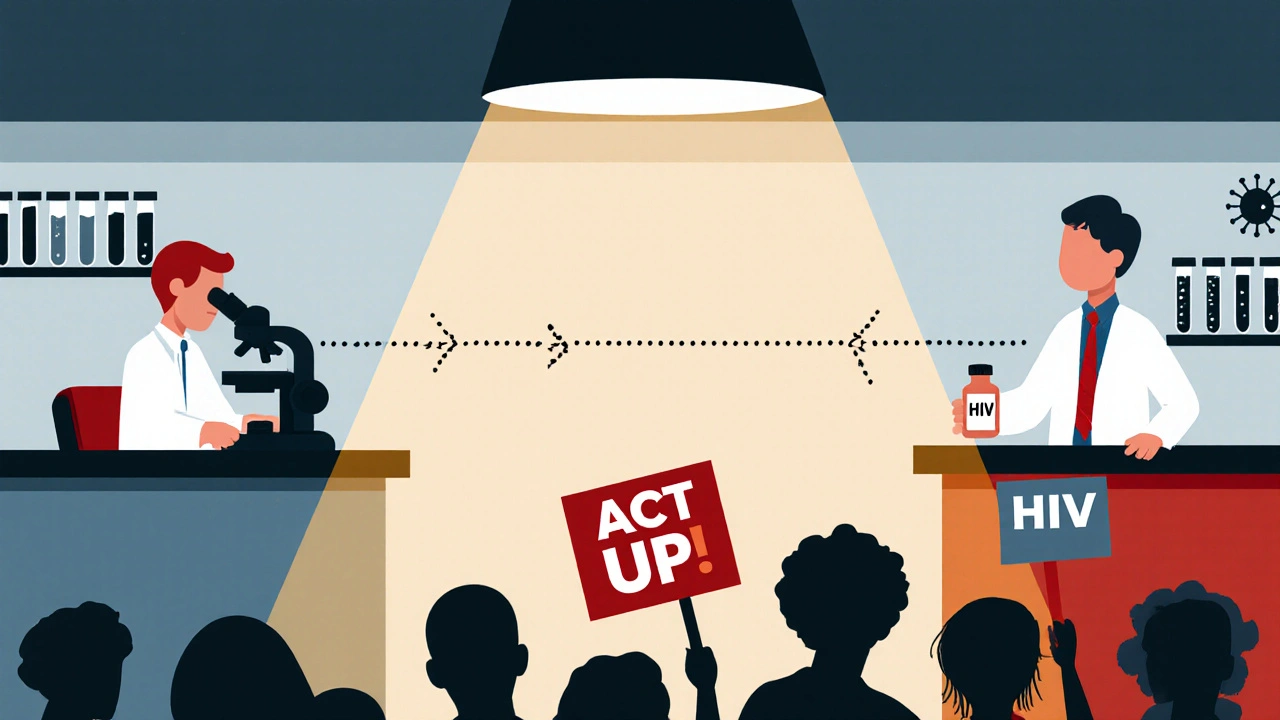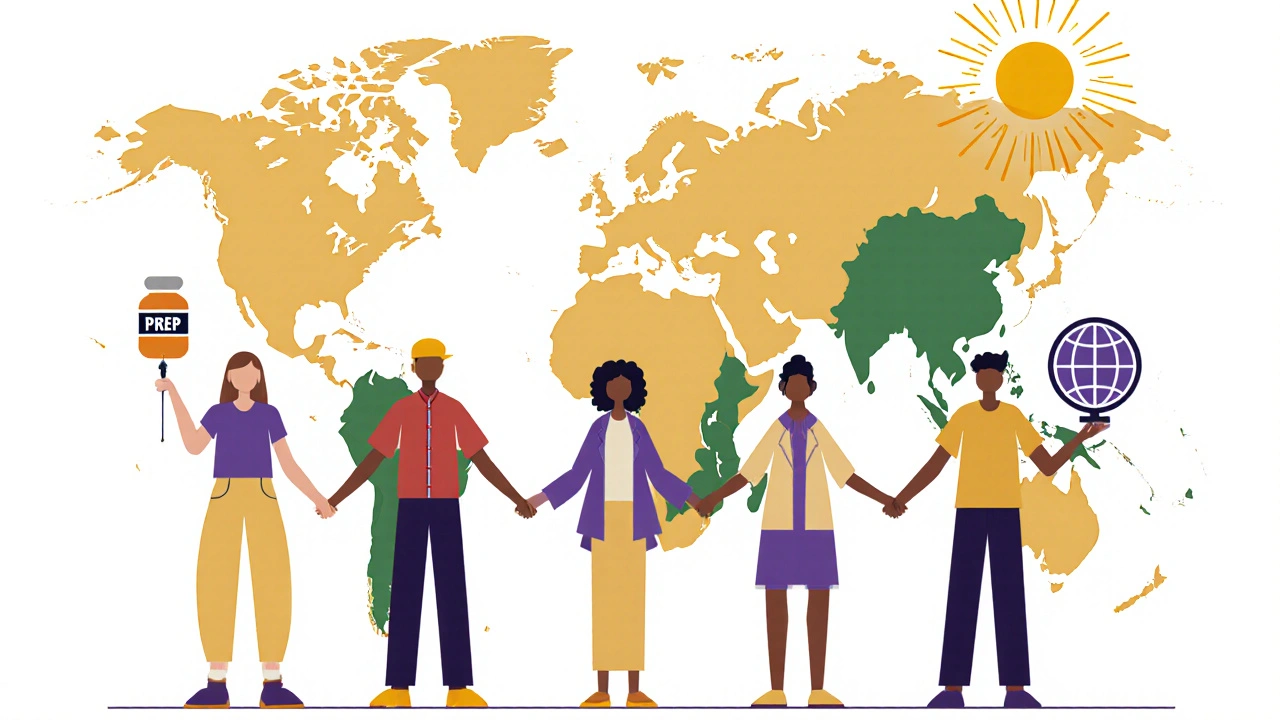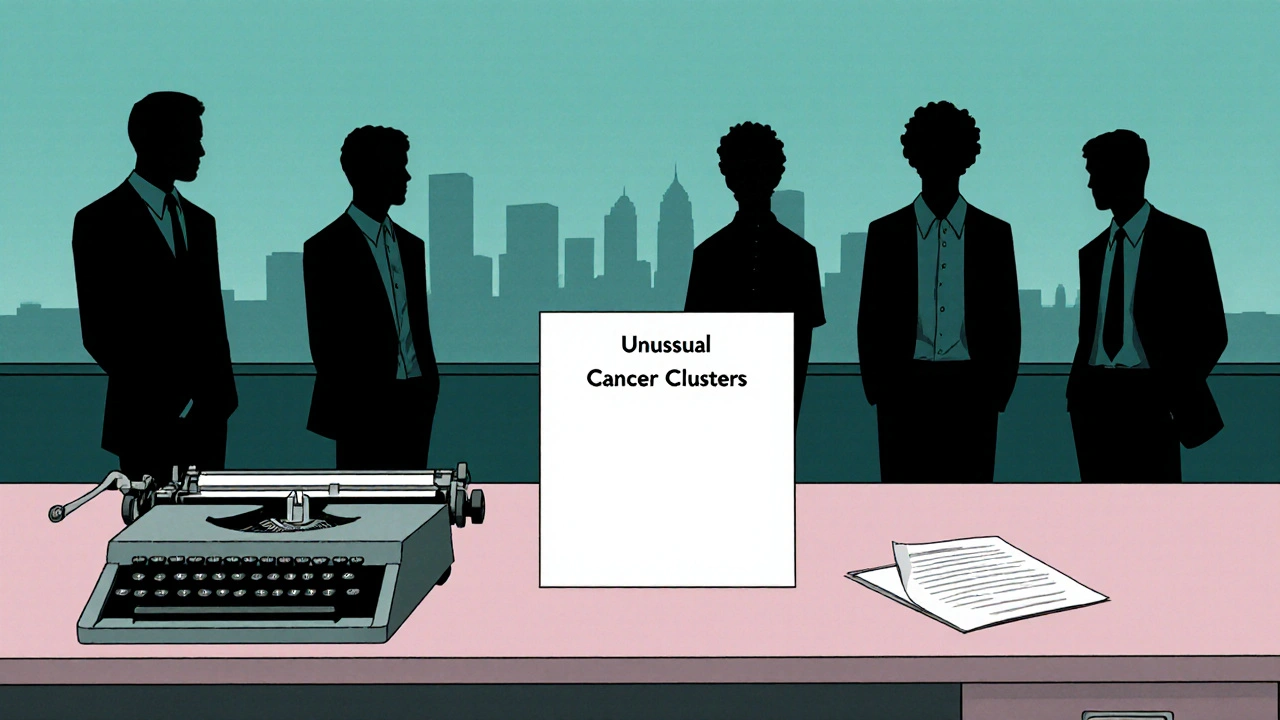AIDS History Quiz
Test Your Knowledge of AIDS History
Quick Summary
- First cases of AIDS were reported in 1981, sparking a worldwide health crisis.
- Identifying HIV as the cause in 1983 enabled targeted testing and research.
- AZT approval in 1987 marked the first drug fight against the virus.
- Combination antiretroviral therapy (ART) in 1996 turned AIDS from a death sentence into a manageable condition.
- Global initiatives like PEPFAR and UNAIDS have cut new infections by half since 2000.
Understanding the AIDS history helps us see how science, policy, and activism shaped the fight against a disease that once seemed unstoppable. Below is a detailed timeline that walks you through each pivotal moment, why it mattered, and what lessons still guide public‑health work today.
Early Signals: 1981‑1985
In June 1981 the CDC published a memo describing a mysterious cluster of rare cancers among young gay men in Los Angeles. The media dubbed it “GRID” (Gay‑Related Immune Deficiency). By the end of 1982, similar cases appeared in New York, San Francisco, and Europe, prompting the term AIDS (Acquired Immunodeficiency Syndrome) to be coined in 1983.
Scientists at the WHO (World Health Organization) began coordinating surveillance, but limited testing tools meant many infections went unnoticed.
Discovery of the Virus: 1983‑1985
French virologist Luc Montagnier isolated a retrovirus from a patient in 1983. The virus was later named HIV (Human Immunodeficiency Virus). Simultaneously, American researcher Robert Gallo confirmed the finding, establishing a clear cause-and‑effect link between HIV and AIDS.
The breakthrough allowed blood banks to screen donations, drastically reducing transfusion‑related infections.
First Drug Trial and Public Fear: 1986‑1990
In 1987 the FDA approved AZT (zidovudine) as the first antiretroviral drug. Though AZT extended life expectancy, its high toxicity and single‑drug regimen limited effectiveness.
Stigma surged as public fear fueled discriminatory policies. Activist groups like ACT UP (AIDS Coalition to Unleash Power) formed in 1987, demanding faster drug approvals and better education.

Combination Therapy and a Turning Point: 1995‑1996
Clinical trials in 1995 showed that combining three drugs-AZT, lamivudine, and indinavir-could suppress viral load more reliably. This regimen, called Highly Active Antiretroviral Therapy (HAART), was approved in 1996 and renamed Antiretroviral therapy (ART).
Within two years, AIDS‑related deaths in the United States fell by 30%, and life expectancy for HIV‑positive patients approached that of the general population.
Global Scale‑Up: 2000‑2005
The launch of PEPFAR (President’s Emergency Plan for AIDS Relief) in 2003 marked a massive U.S. commitment of $15billion over five years. Simultaneously, UNAIDS (Joint United Nations Programme on HIV/AIDS) set a target to halve new infections by 2015.
These programs expanded testing, counseling, and treatment in sub‑Saharan Africa, where 70% of new infections occurred.
Prevention Breakthroughs: 2006‑2016
In 2012, the CDC recommended pre‑exposure prophylaxis (PrEP) using the drug Truvada. Studies showed a 92% reduction in HIV acquisition among high‑risk groups.
Mother‑to‑child transmission dropped below 5% worldwide thanks to routine ART during pregnancy, a goal championed by the Ryan White Program in the U.S.

Recent Advances and Ongoing Challenges: 2017‑2025
Long‑acting injectable ART (cabotegravir) received FDA approval in 2021, offering dosing every two months. Gene‑editing research using CRISPR‑Cas9 shows promise but remains experimental.
Despite progress, 38million people still live with HIV in 2024, and new infections plateaued at 1.5million annually. Stigma, funding gaps, and drug resistance are key obstacles.
Key Milestones at a Glance
| Year | Event |
|---|---|
| 1981 | CDC reports unusual cancer clusters among gay men (first official AIDS cases). |
| 1983 | Discovery of HIV by French and American researchers. |
| 1987 | FDA approves AZT, the first antiretroviral drug. |
| 1996 | Introduction of HAART/ART transforms HIV from fatal to chronic. |
| 2003 | PEPFAR launched, dramatically increasing treatment access. |
| 2012 | CDC recommends PrEP for high‑risk individuals. |
| 2021 | Long‑acting injectable ART approved, reducing dosing frequency. |
What the History Teaches Us
Three lessons stand out:
- Science moves fast when it’s funded. Early under‑investment delayed drug development; massive funding through PEPFAR and the Global Fund accelerated progress.
- Community activism is a catalyst. Groups like ACTUP pressured regulators, leading to faster trial designs and more compassionate policies.
- Prevention works best when combined with treatment. Countries that scaled up both ART and PrEP saw the biggest drops in new infections.
Frequently Asked Questions
When was AIDS first recognized?
The CDC published the first report of what would become known as AIDS in June 1981.
What virus causes AIDS?
AIDS is caused by the Human Immunodeficiency Virus (HIV), which attacks the immune system.
How did antiretroviral therapy change the epidemic?
When combination ART became standard in 1996, viral loads dropped dramatically, turning AIDS from a death sentence into a chronic, manageable condition.
What role did PEPFAR play?
PEPFAR funneled billions of dollars into testing, treatment, and prevention across 15 high‑burden countries, slashing new infections by roughly 40% between 2003 and 2020.
Is there a cure for HIV/AIDS?
No cure exists yet, but ongoing research into gene editing, broadly neutralizing antibodies, and therapeutic vaccines aims to achieve a functional cure within the next decade.

Tom Green
Thanks for sharing this comprehensive timeline. It really puts the progress into perspective and shows how community advocacy mattered every step of the way.
Anyone looking to dive deeper can start with the early CDC reports from 1981, then follow the cascade of policy changes that followed.
Cindy Thomas
Sure, the timeline is neat, but it glosses over how many governments deliberately delayed drug approvals to protect pharmaceutical profits 😒.
Don't forget that ACT UP's pressure was the only thing that sped up the process, not the benevolent scientists.
Kate Marr
Reading about all those U.S. initiatives feels like a reminder that American leadership really turned the tide 🌎🇺🇸.
Other nations could have learned a lot if they'd just followed our example sooner.
James Falcone
Yo, while the U.S. did a lot, let’s not act like we were the only heroes.
Some European countries were already on the hook with massive testing before we even rolled out PEPFAR.
Frank Diaz
The evolution of AIDS treatment reads like a modern parable about the interplay between science and society.
In the early 80s, fear and ignorance created a vacuum that was quickly filled by moral panic.
The discovery of HIV in 1983 was a scientific triumph, yet its impact was blunted by the slow political response.
AZT’s approval in 1987 illustrated how regulatory agencies can be both a lifeline and a bottleneck.
Its toxicity and limited efficacy sparked a backlash that forced activists to demand more humane trials.
The real watershed, however, was the advent of HAART in 1996, which turned a death sentence into a chronic disease.
This shift did not happen in a vacuum; it was the result of massive funding, public pressure, and a willingness to embrace combination therapy.
PEPFAR’s massive infusion of resources in the early 2000s demonstrated how political will can accelerate access to lifesaving drugs.
Yet the numbers hide a deeper truth: without community-led education, many of those resources would have been squandered.
The rollout of PrEP in 2012 shows that prevention can be as powerful as cure, provided we destigmatize its use.
Long‑acting injectables approved in 2021 promise to reduce adherence barriers, but they also raise concerns about equity.
Gene‑editing research offers a tantalizing glimpse of a functional cure, yet ethical debates linger.
Stubborn stigma, funding shortfalls, and the emergence of drug‑resistant strains remind us that the battle is far from over.
History teaches that when we align scientific innovation with compassionate policy, progress accelerates dramatically.
Conversely, when we let politics or prejudice dictate the agenda, we repeatedly watch preventable lives slip away.
Virginia Dominguez Gonzales
What a powerful reminder of how far we’ve come!
It’s inspiring to see how collective action can reshape an entire medical landscape.
Keep pushing forward, because every story you share fuels the next generation of advocates.
Carissa Padilha
Did you ever notice that the so‑called “global initiatives” often coincide with periods of increased surveillance?
There’s a pattern where funding spikes just before major data‑collection pushes.
The narrative that we’re only fighting a virus ignores the parallel agenda of control.
It feels like a puppet show, with public health as the stage.
Stay skeptical.
Richard O'Callaghan
Yo i cant beleive u fell for that story
its just a smoke screen you know
big pharma and govn want us to think its all about disease not power
Alexis Howard
Meh, another textbook timeline.
Kevin Adams
The brevity of that comment is itself a declaration of the void that modern discourse inhabits.
When we reduce history to a shrug, we betray the very souls who suffered and fought.
Each bullet point in that timeline is a story of resilience, not a mere statistic.
Katie Henry
Esteemed community members, let us take this moment to celebrate the remarkable advancements chronicled herein.
May the dedication of researchers, activists, and policymakers continue to inspire our collective resolve.
Together, we shall forge a future wherein HIV/AIDS is no longer a global threat.
Joanna Mensch
Sometimes the quietest voices notice the patterns that everyone else misses; the timing of these initiatives feels oddly orchestrated.
RJ Samuel
Honestly, I think the whole “turning point” narrative is a bit of a myth – progress is messy, and we love tidy stories like a good plot twist in a novel.
Nickolas Mark Ewald
I agree, history isn’t a straight line but sharing these milestones helps us stay informed and supportive.